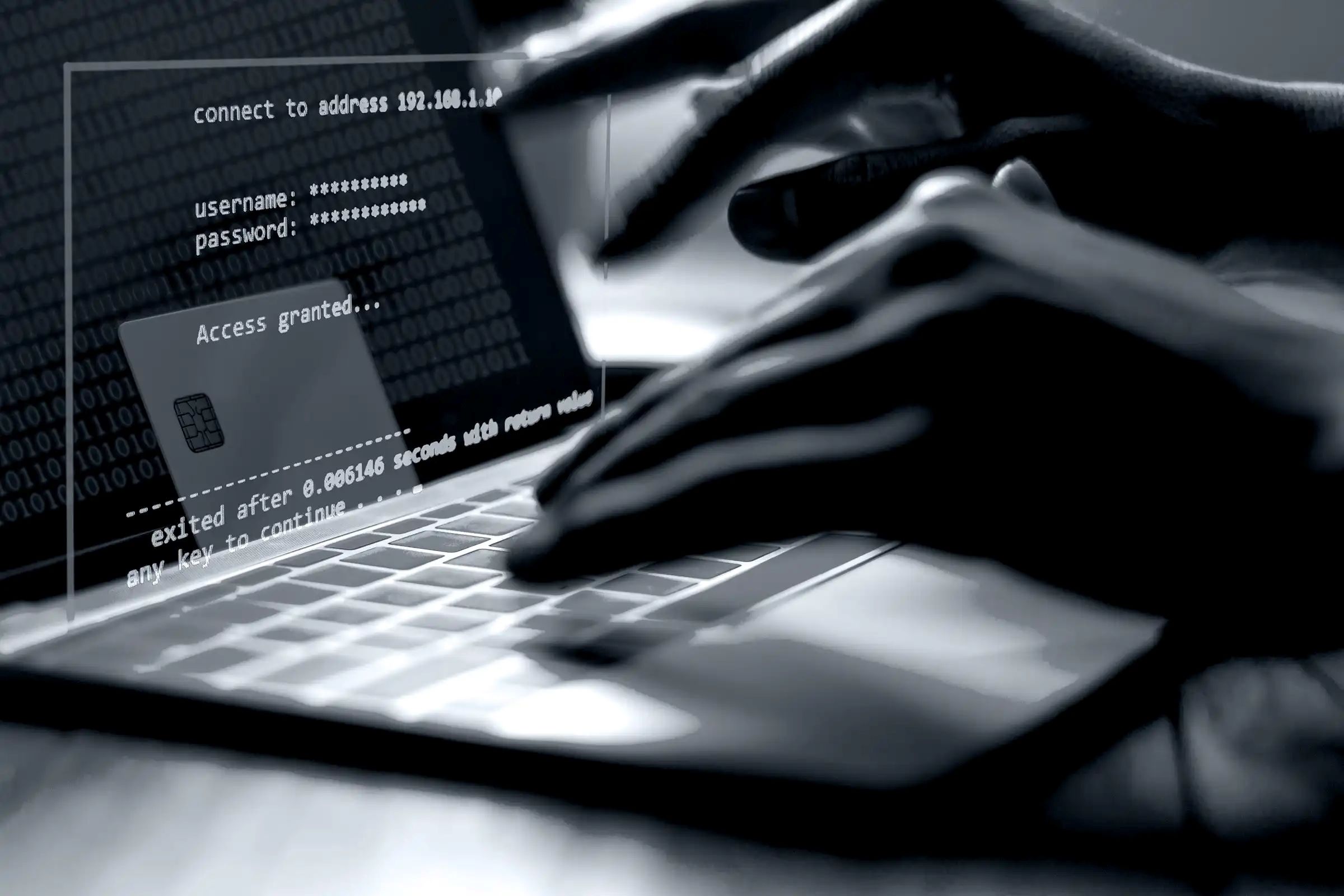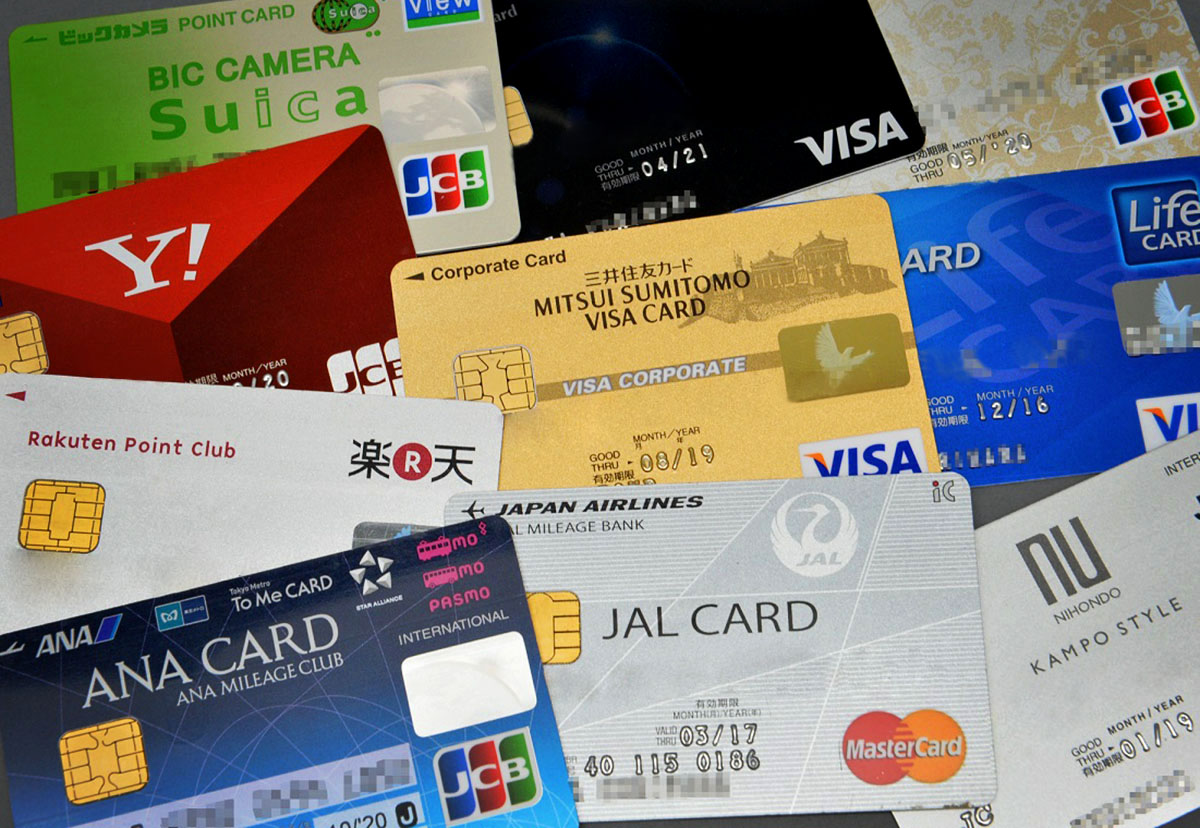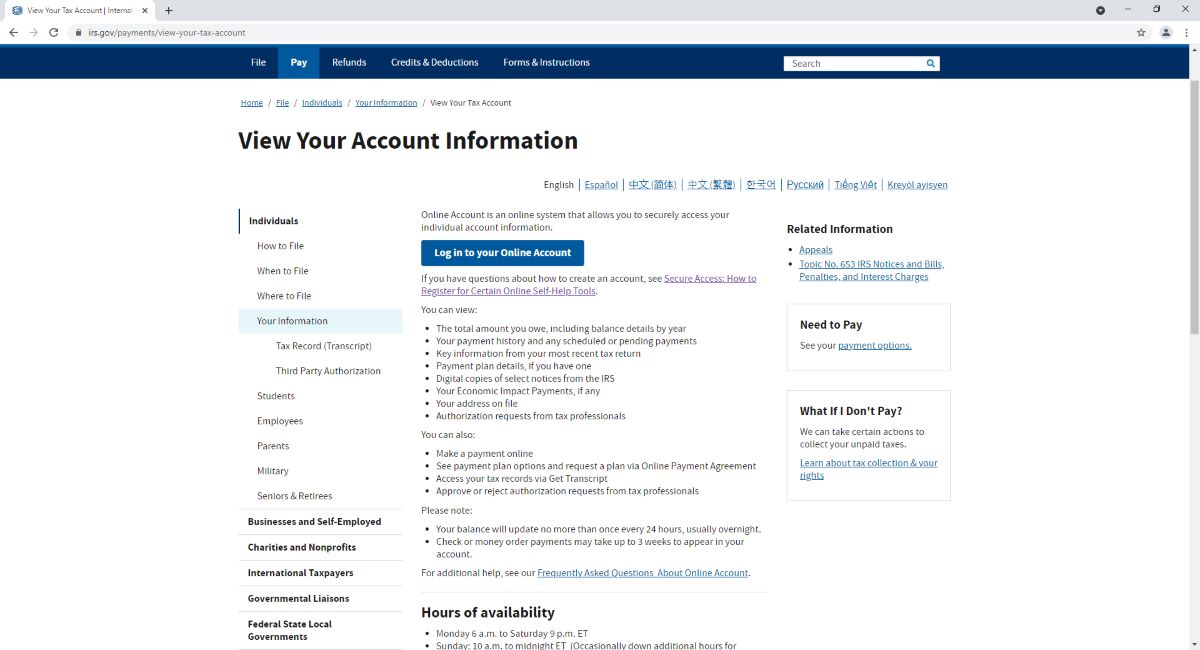

Finance
How Do Credit Card Thieves Get Caught
Published: October 27, 2023
Learn how credit card thieves get caught and what measures can be taken to secure your finances. Find out more about finance and credit card fraud detection.
(Many of the links in this article redirect to a specific reviewed product. Your purchase of these products through affiliate links helps to generate commission for LiveWell, at no extra cost. Learn more)
Table of Contents
Introduction
Credit card theft is a serious and prevalent issue in today’s society. With the widespread use of credit cards for everyday transactions, criminals have found numerous ways to exploit this form of payment. However, it is important to note that credit card thieves do not always go undetected. Law enforcement agencies and financial institutions have implemented various strategies and techniques to catch these criminals, ensuring that they are held accountable for their actions.
Investigating credit card theft requires a combination of advanced surveillance technologies, transaction analysis, customer complaints, digital forensics, and collaboration with law enforcement agencies. By examining the methods used to track down credit card thieves, we can gain valuable insights into how these criminals are identified and apprehended.
Surveillance and monitoring techniques play a crucial role in detecting credit card theft. Financial institutions and law enforcement agencies utilize sophisticated systems to monitor suspicious activities and transactions. They constantly review transaction data, looking for any irregular patterns or unauthorized transactions that may indicate credit card theft. These monitoring systems are designed to alert authorities immediately, enabling them to take prompt action.
In addition to surveillance, transaction analysis is a key component in catching credit card thieves. Trained professionals analyze transaction data and search for patterns or anomalies that suggest fraudulent activity. They compare the spending patterns of the cardholder with the fraudulent transactions, identifying any inconsistencies that raise suspicion. This analysis is crucial in building a strong case against the thief.
Customer complaints also play a vital role in identifying credit card theft. Financial institutions have dedicated teams to handle customer complaints related to unauthorized transactions or suspicious activity. Those complaints are thoroughly investigated, with particular attention given to identifying any common factors or trends. By gathering information from multiple customers, investigators can discover connections that help them narrow down potential suspects.
Investigating Credit Card Theft
Investigating credit card theft is a complex process that requires the collaboration of various entities, including financial institutions, law enforcement agencies, and digital forensics experts. With the advancement of technology and the increasing number of online transactions, the task of tracking down credit card thieves has become more challenging.
When a credit card theft is reported, the investigation begins by collecting as much information as possible. Financial institutions cooperate with the affected cardholders to gather transaction records, receipts, and any other relevant evidence that can assist in identifying the thief. This information is crucial in establishing a timeline of fraudulent activities and determining the extent of the theft.
Law enforcement agencies play a pivotal role in investigating credit card theft. Once they receive the necessary information from the financial institution, they initiate a thorough investigation. They work in collaboration with the affected individuals and financial institutions to gather further evidence and build a case against the thief. This involves conducting interviews, examining surveillance footage, and coordinating with other agencies if the investigation crosses jurisdictional boundaries.
Digital forensics experts also have a crucial role in investigating credit card theft, especially in cases involving online transactions. These professionals are skilled in analyzing digital footprints left by the criminals. They trace the origin of the fraudulent transactions, identify any IP addresses or devices used, and gather additional evidence that can link the thief to the crime. Digital forensics plays a crucial role in proving the identity of the perpetrator and establishing a solid case.
Additionally, financial institutions employ sophisticated algorithms and artificial intelligence systems to detect and prevent credit card theft. These systems analyze vast amounts of data in real-time, looking for signs of fraudulent activities. They can flag suspicious transactions, block unauthorized purchases, and even temporarily freeze the account if any suspicious activity is detected. This proactive approach not only helps to prevent credit card theft but also provides valuable insights for investigators.
Overall, investigating credit card theft requires a combination of advanced technology, collaboration between various entities, and diligent analysis of available data. By leveraging these tools and techniques, law enforcement agencies and financial institutions can successfully identify and apprehend credit card thieves, ensuring that justice is served and protecting consumers from financial harm.
Surveillance and Monitoring Techniques
Surveillance and monitoring techniques play a crucial role in detecting and preventing credit card theft. Financial institutions and law enforcement agencies employ a range of advanced technologies and strategies to monitor transactions, identify suspicious patterns, and take immediate action to stop fraudulent activities.
One of the primary surveillance techniques used is transaction monitoring. Financial institutions have systems in place that constantly monitor all transactions made with credit cards. These systems analyze various transaction attributes such as transaction amount, location, time of day, and spending patterns. Any deviations from the cardholder’s normal spending behavior trigger alerts for further investigation.
Another surveillance technique is the use of real-time fraud detection algorithms. Financial institutions have algorithms that compare transactions against known patterns of fraudulent activity. These algorithms can identify recurring patterns or anomalies that may indicate credit card theft. For example, if multiple transactions are made within a short period of time for high-value purchases in different locations, it could raise suspicion and prompt further investigation.
In addition to transaction monitoring, financial institutions also employ network monitoring. This involves analyzing the network traffic between a cardholder’s device and the financial institution’s servers. Any abnormal network activity, such as unusual requests or connections, can be an indication of a compromised device or a potential data breach. Network monitoring allows institutions to identify and respond swiftly to any security threats.
Surveillance cameras are another important tool in monitoring credit card transactions, especially in physical retail locations. Surveillance cameras are strategically placed to capture every transaction, ensuring that there is a visual record of all cardholder activities. In the event of suspicious or unauthorized transactions, law enforcement agencies can review the surveillance footage to help identify the culprit.
Furthermore, artificial intelligence (AI) plays a significant role in surveillance and monitoring techniques. AI algorithms can analyze large volumes of data quickly and accurately, identifying patterns and anomalies that might go unnoticed by human analysts. AI can detect unusual spending behavior, identify potential fraudsters, and even predict and prevent future credit card theft.
Overall, surveillance and monitoring techniques are crucial in the fight against credit card theft. By leveraging advanced technologies, financial institutions and law enforcement agencies can effectively detect fraudulent activities, safeguard cardholders’ financial assets, and hold credit card thieves accountable for their actions.
Transaction Analysis
Transaction analysis is a vital aspect of investigating and preventing credit card theft. By closely examining transaction data, financial institutions and law enforcement agencies can identify patterns, anomalies, and red flags that indicate fraudulent activities.
One of the key elements of transaction analysis is comparing a cardholder’s spending habits and patterns with the transactions being analyzed. Financial institutions have access to historical transaction data, allowing them to establish a baseline of normal spending behavior for each cardholder. By analyzing current transactions against this baseline, any deviations or inconsistencies can be detected. For example, if a cardholder typically spends around $100 per transaction at local stores, but suddenly there are multiple transactions for high-value purchases at international locations, it raises suspicion and triggers further investigation.
Another aspect of transaction analysis is examining transaction attributes such as location, time, and merchant category. Financial institutions employ algorithms that identify unusual patterns or combinations of these attributes. For instance, a series of transactions made in quick succession from different countries or regions could indicate that the card has been compromised or cloned.
Data analytics and machine learning play a significant role in transaction analysis. By analyzing vast amounts of transaction data, sophisticated algorithms can detect previously unseen patterns or trends that may indicate credit card theft. These algorithms can adapt and evolve based on new data, staying up-to-date with the latest tactics used by fraudsters.
Additionally, tools like graph analysis and social network analysis are utilized in transaction analysis to identify connections and relationships between different cardholders and merchants. This can uncover networks of fraudulent activity and help in tracing the flow of stolen funds. By examining the interconnectedness of transactions, investigators can uncover hidden links and identify key players involved in credit card theft.
Furthermore, collaborative efforts between financial institutions and law enforcement agencies are essential in transaction analysis. Information sharing allows for a broader perspective on fraudulent activities and helps in the identification of trends or geographic hotspots. This collaboration enables investigators to connect the dots and build a comprehensive picture of credit card theft cases.
By leveraging transaction analysis techniques, financial institutions and law enforcement agencies can proactively identify and prevent credit card theft. This analysis not only helps in catching individual fraudsters but also aids in understanding the evolving tactics of criminals, allowing for the development of more robust security measures to protect cardholders.
Customer Complaints
Customer complaints play a pivotal role in the investigation and detection of credit card theft. When individuals notice unauthorized or suspicious transactions on their credit card statements, they promptly report them to their financial institution. These reports trigger an investigation process that helps uncover details about the fraudulent activities and potentially leads to the identification and apprehension of the credit card thief.
Financial institutions have dedicated teams to handle customer complaints related to unauthorized transactions. These teams are trained to handle sensitive information and guide customers through the reporting process. Customers are encouraged to provide as much detail as possible, including the date, time, and location of the suspicious transaction. They may also be asked to provide any additional supporting documentation, such as receipts or screenshots of the transaction.
Each customer complaint is examined thoroughly, and patterns are identified to determine if multiple complaints are related. By analyzing multiple complaints, financial institutions can identify potential links and connections among different fraudulent activities. This information is crucial in building a case against the credit card thief and uncovering any networks involved in the theft.
Customer complaints also serve as valuable feedback to improve security measures. Financial institutions strive to continuously enhance their fraud detection and prevention systems based on the information provided by their customers. By studying the nature of the reported incidents, financial institutions can identify emerging trends and develop more effective strategies to protect their customers from future credit card theft.
Moreover, financial institutions often provide support and assistance to affected customers during the investigation process. This includes temporarily freezing the account, issuing a new credit card, and refunding any unauthorized charges. By promptly addressing customer concerns and providing assistance, financial institutions aim to minimize the impact of credit card theft on the customers’ financial well-being.
It is important for customers to be vigilant and report any suspicious activities promptly. By reporting fraudulent transactions, customers not only protect their own financial interests but also contribute to the overall detection and prevention of credit card theft. Customer complaints serve as a crucial piece of the puzzle in uncovering the activities of credit card thieves and ensuring that they are brought to justice.
Cooperation with Law Enforcement
Cooperation between financial institutions and law enforcement agencies is essential in combating credit card theft. Law enforcement agencies play a crucial role in investigating and apprehending credit card thieves, while financial institutions provide valuable assistance and information to aid in these efforts.
Financial institutions actively collaborate with law enforcement agencies by promptly reporting incidents of credit card theft. When suspicious activities or unauthorized transactions are detected, financial institutions notify the appropriate authorities, providing them with vital information such as transaction records, account details, and any evidence collected during the investigation process. This cooperation enables law enforcement agencies to start their investigations quickly and efficiently.
Law enforcement agencies, in turn, work closely with financial institutions to gather additional evidence and build a strong case against credit card thieves. They analyze the provided information, interview affected individuals, and seek any potential witnesses or surveillance footage that can assist in identifying the culprits. Financial institutions’ expertise in transaction analysis and data interpretation greatly contribute to the investigation process.
When credit card theft involves international transactions or networks, cooperation between law enforcement agencies from different jurisdictions becomes imperative. Financial institutions play a crucial role in facilitating cross-border collaboration by sharing information and coordinating efforts between agencies. This collaboration enables law enforcement to trace the movement of stolen funds, identify key players in criminal networks, and bring them to justice.
In addition to cooperation in ongoing investigations, financial institutions assist law enforcement agencies in developing strategies to prevent credit card theft. They share their knowledge and expertise in fraud detection and prevention, providing insights into emerging trends and tactics used by criminals. This information helps law enforcement agencies stay updated and adapt their investigative techniques to effectively combat credit card theft.
Furthermore, financial institutions support law enforcement agencies by providing training and resources to enhance their understanding of credit card theft and the methodologies employed by fraudsters. This collaboration ensures that law enforcement personnel are equipped with the necessary knowledge and skills to tackle evolving forms of credit card theft.
Overall, the cooperation between financial institutions and law enforcement agencies is crucial in combating credit card theft. Through information sharing, joint investigations, and collaborative prevention strategies, they can work together to detect, apprehend, and bring to justice those responsible for credit card theft, ultimately safeguarding the financial interests and well-being of individuals and businesses.
Identifying Patterns and Networks
Identifying patterns and networks is a key aspect of investigating credit card theft. By analyzing data and transactions, financial institutions and law enforcement agencies can uncover connections, trends, and networks involved in the fraudulent activities.
Financial institutions utilize sophisticated algorithms and data analysis techniques to identify patterns of fraudulent activity. These algorithms analyze transaction data, look for similarities in spending patterns, transaction attributes, and other variables. By detecting recurring patterns, financial institutions can flag suspicious activities and initiate further investigation.
In addition to transaction data, financial institutions also examine other sources of information, such as customer complaints and reports of unauthorized transactions. By analyzing multiple incidents, they can identify common factors, geographical hotspots, and potential connections between different cases, indicating the presence of organized networks.
Law enforcement agencies play a critical role in connecting the dots and uncovering larger criminal networks involved in credit card theft. They collaborate with financial institutions, pooling their resources and information to identify interrelationships between individuals, merchants, and other entities involved in fraudulent activities.
An important tool in identifying patterns and networks is data analysis and visualization. By visualizing transaction data and mapping connections, investigators can identify clusters of suspicious activities, uncover dormant accounts used for money laundering, and trace the flow of stolen funds. This visual representation helps investigators gain a better understanding of the complex networks involved in credit card theft.
Machine learning and artificial intelligence (AI) also play a significant role in identifying patterns and networks. These technologies can analyze vast amounts of transaction data, detect hidden correlations, and predict the likelihood of fraudulent activities. By leveraging AI algorithms, investigators can identify new and emerging patterns, enabling them to stay one step ahead of credit card thieves.
Moreover, collaboration between financial institutions and law enforcement agencies is vital in identifying patterns and networks. By sharing information, expertise, and conducting joint investigations, they can uncover the intricate relationships and connections between individuals, merchants, and fraudulent activities.
Identifying patterns and networks is an ongoing process. As credit card thieves evolve their tactics, financial institutions and law enforcement agencies must continuously adapt their techniques and algorithms to stay ahead. By successfully identifying patterns and networks, investigators can dismantle criminal organizations and bring those responsible for credit card theft to justice, ultimately protecting individuals and businesses from financial harm.
Digital Forensics
Digital forensics plays a critical role in investigating and solving cases of credit card theft. As technology advances, criminals have turned to digital methods to carry out their illegal activities, making digital forensics an essential tool for detecting and gathering evidence against credit card thieves.
When credit card theft is reported, digital forensics experts are called upon to analyze electronic devices, such as computers, smartphones, or point-of-sale (POS) systems, that may contain valuable evidence. They employ specialized software and techniques to recover deleted or encrypted data, examine internet browsing history, and trace the digital footprints left by the criminals.
One vital aspect of digital forensics is analyzing malware or hacking tools used to compromise credit card information. Digital forensics experts examine the code, behavior, and impact of the malicious software to determine how the theft occurred, where the stolen data was transmitted, and ultimately identify potential culprits. This analysis often involves cooperation with cybersecurity professionals to understand the techniques employed by hackers.
Another crucial aspect of digital forensics is analyzing network traffic and logs. By examining network logs, investigators can identify unauthorized access attempts, trace the path of stolen information, and identify potential points of compromise. They can also identify the IP addresses or devices used in the commission of credit card theft, which is essential in building a case against the perpetrators.
Digital forensics also involves the analysis of transaction data. Investigators analyze databases, logs, and spreadsheets to identify abnormalities, unauthorized transactions, or anomalies in the data. These irregularities can help uncover fraudulent activities and provide valuable evidence in tracking down credit card thieves.
Mobile device forensics is another important aspect of digital forensics in credit card theft cases. Smartphones and tablets often contain crucial evidence, such as communication records, location data, or applications used by thieves. Digital forensics experts use specialized tools and techniques to extract and analyze data from these devices, contributing to the overall investigation process.
Collaboration is key in digital forensics. Financial institutions and law enforcement agencies work together to provide access to necessary data and technology for forensic analysis. This collaboration ensures that the digital evidence is effectively handled and that the investigation proceeds smoothly.
Overall, digital forensics plays a pivotal role in investigating credit card theft. It enables investigators to uncover digital evidence, identify hacking techniques used by criminals, trace the flow of stolen information, and ultimately build a strong case against the culprits. By leveraging digital forensics, law enforcement agencies can hold credit card thieves accountable and protect individuals and businesses from further harm.
Tips for Preventing Credit Card Theft
Preventing credit card theft is essential to safeguard your personal and financial information. By implementing these proactive measures, you can reduce the risk of falling victim to credit card thieves:
- Keep your credit cards safe: Always keep your credit cards in a secure location, such as a wallet or purse. Avoid leaving them unattended or lending them to others.
- Regularly monitor your credit card statements: Review your credit card statements regularly for any unauthorized or suspicious transactions. If you notice anything unusual, report it to your financial institution immediately.
- Protect your PIN: When using your credit card at an ATM or a point-of-sale (POS) terminal, shield your PIN from prying eyes. Memorize your PIN and avoid writing it down or sharing it with anyone.
- Be cautious with online transactions: Verify that websites are secure before entering your credit card information. Look for the padlock icon in the browser address bar and ensure the URL starts with “https://”. Avoid making online purchases from unfamiliar or unsecure websites.
- Use secure networks: Avoid making credit card transactions on public Wi-Fi networks, as these networks are often unsecured and can be easily intercepted by hackers. Only use trusted and secure networks when conducting financial transactions.
- Be vigilant of phishing attempts: Be cautious of emails or messages requesting your credit card information or login credentials. Legitimate institutions will never ask for this information via email. If in doubt, contact the institution directly to verify the authenticity of the request.
- Enable transaction alerts: Take advantage of transaction alert services provided by your financial institution. These alerts can notify you of any suspicious activities or transactions made using your credit card.
- Regularly update your passwords: Use strong, unique passwords for your online accounts and update them regularly. Avoid using easily guessable passwords or personal information in your passwords.
- Stay vigilant during card transactions: Watch out for suspicious devices or tampering when using your credit card at ATMs or POS terminals. If something looks unusual or seems off, avoid using the machine and inform the card issuer or business owner immediately.
- Report lost or stolen cards immediately: If your credit card is lost, stolen, or misplaced, report it to your financial institution immediately. Timely reporting can help prevent unauthorized use of the card.
By following these tips, you can significantly reduce the risk of credit card theft and protect your financial information. It is essential to remain vigilant and proactive in safeguarding your credit card details, ensuring a secure and worry-free financial experience.
Conclusion
Credit card theft is a serious and ongoing threat in today’s digital age. However, with the collaboration of financial institutions and law enforcement agencies, along with the application of advanced surveillance techniques, transaction analysis, and digital forensics, credit card thieves can be identified, apprehended, and brought to justice.
Surveillance and monitoring techniques, such as transaction analysis and real-time fraud detection algorithms, enable financial institutions to detect and flag suspicious activities, preventing potential credit card theft in real-time. Customers’ complaints play a vital role in identifying patterns and trends, allowing investigators to uncover potential networks involved in fraudulent activities.
Cooperation between financial institutions and law enforcement agencies is critical in combating credit card theft. By sharing information and expertise, they can collaborate on investigations, trace the flow of stolen funds, and dismantle criminal networks.
Digital forensics is an essential tool in identifying and collecting evidence in credit card theft cases. Experts in digital forensics analyze electronic devices, recover deleted or encrypted data, and trace digital footprints to pinpoint the culprits and gather evidence that can be used in legal proceedings.
Preventing credit card theft is also of utmost importance. By following tips such as keeping credit cards secure, monitoring statements, and being cautious online, individuals can significantly reduce the risk of becoming victims of credit card theft.
In conclusion, through a combination of proactive prevention measures, advanced surveillance techniques, transaction analysis, collaboration with law enforcement, and digital forensics expertise, the fight against credit card theft continues to evolve and become more effective. By staying vigilant and working together, we can protect individuals and businesses from the financial and emotional consequences of credit card theft, ensuring a safer and more secure financial environment.














